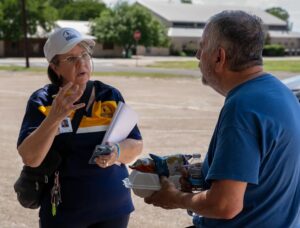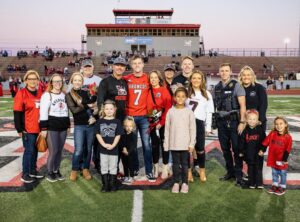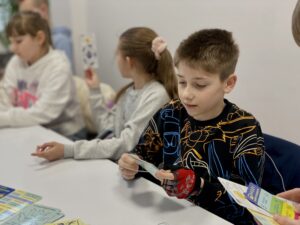
VALDESE, N.C. (BP)–Four years ago, Jimmy Jacumin trekked through the alpine valleys of northern Italy tracing his Waldensian heritage colored by the blood of Christian martyrs.
The Baptist layman prayed and read Scripture in the Church of the Cave where six centuries earlier Waldensians, who had been excommunicated by the Roman Catholic Church for zealously preaching the Bible, secretly worshiped inside a damp, dimly lit mountain cave.
Jacumin visited the small one-room Barbi College where lay ministers memorized entire books of the Bible, defying orders of the Roman Catholic Church prohibiting everyone except the priests from reading Scripture.
He stood at the monuments paying tribute to those who were killed in their sleep, on the streets and burned in their churches for rejecting Roman Catholic beliefs in purgatory, prayers for the dead, as well as prayers to images of the saints.
“They (Roman Catholic soldiers) took them out of prison, several thousand of them, during the winter … and said, ‘If you don’t give up your faith, we’re going to exile you across the mountains.’ Better than three-fourths of them said, ‘We will not give up our Jesus,'” recounted Jacumin, a 60-year-old nuclear engineer who is a deacon at First Baptist Church, Icard, N.C., and a member of Southeastern Baptist Theological Seminary’s board of trustees.
“They (Waldensians) could travel all the way across Europe and spend the night each night with someone they had won to the Lord,” Jacumin added.
His mind was racing when he returned to his home in North Carolina. He envisioned an Italian alpine valley situated in his native Burke County, like the one over which his ancestors fled to escape persecution. Historic exhibits memorializing the Waldensians, who first settled the Burke County town of Valdese in 1893, would line the valley, Jacumin dreamed.
“Just hoping and praying this might work out, I designed the mountain range and calculated the number of yards of dirt we needed,” Jacumin said. “We needed 40,000 cubic yards.”
Yet, after four heart-pleading requests for a two-acre tract in front of the amphitheater in Valdese, Jacumin still had only a dream. For 30 years the Waldensians’ story has been told every summer through a drama titled, “From This Day Forward,” presented at the amphitheater. Still, Jacumin was convinced much more of the Waldensian story needed to be told.
“I had such a burden here, so that our children, school children and people in this country could see the same thing and be motivated by the tremendous faith the Waldensians had,” Jacumin said.
Then Jacumin approached the landowner a fifth time. “I said, ‘Fred, I just have to ask you again is there any way that you would sell this land to us? We have to have it if we are going to build a Trail of Faith.’ He (Fred) said, ‘Jim, I am not going to sell my land, I am going to give it to you.’
“Fifty thousand dollars worth of land!” Jacumin exclaimed. “That’s when it started. That’s the first miracle. We have had miracle after miracle come right along.”
As for the dirt needed to build the mountain range?
“When we graded his property it turned out there was exactly 40,000 cubic yards,” Jacumin said.
Thus, from a dream in 1993, the “Waldensian Trail of Faith” has become an emerging, 15-exhibit reality on the two-acre tract in Valdese.
State approval required for constructing the mountain cave, which usually takes four months, was granted in four days, just in time for Jacumin to start bulldozing the week of July 4, 1994, during his engineering and machine company’s annual week-long shutdown. Other key developments: the loan of metal pans, valued at $50,000, to form concrete to build the cave; a $25,000 grant from the North Carolina Department of Cultural and Natural Resources; 15,000 hours of free labor; the acquisition of a building in downtown Valdese to serve as a central office to host tour groups; and an additional $335,500 donated by various people and organizations to help fund the project.
The state has agreed to include Valdese as a stop on its proposed train line scheduled to begin operation in about two years, running twice a day from Raleigh to Asheville.
Said Jacumin, “… while the world would say they are happenstance, those that love the Lord know they’re miracles.”
Once an open field, this reconstructed 20-foot valley is now outlined by green grassy hills, 750 feet long by 50 feet high, depicting the Valdese mountain ranges of northern Italy. When completed sometime in the summer of 1998, at a total cost of about $1 million, the Waldensian Trail of Faith’s 15 exhibits will feature live and recorded narration testifying of the many sacrifices made by the Waldensians in defense of their faith in Christ.
Also, the replica of the “Church of the Cave” is nearly complete – – 11 feet wide, 50 feet long and 23 feet high, supported by 30,000 pounds of steel reinforcement. “It’s almost identical to the dimension in the Old Country,” Jacumin explained.
Under construction is a tiny one-room school with its stone facade representing the stone masonry perfected by the Waldensians. The roof will be made of slate to reflect the original construction.
The building materials that occur naturally in Valdese are quite similar to the stones found in Italy and France, Jacumin said. The familiar rocky terrain, he said, was one of the reasons the Waldensians chose to settle in Valdese, N.C.
On May 29, 1893, 17 immigrant families, totaling 29 people including children, arrived at their new home in Burke County in the western part of North Carolina, having traveled by way of boat and train from the Cottian Alps, southwest of Turin, Italy.
Before the end of that year, 427 Waldensians had migrated to the county to charter the colony known since then as Valdese, N.C. A stone monument, erected in 1943 to celebrate the 50th anniversary of the Waldensians’ arrival, stands in front of the Valdese Presbyterian Church. In 1993, the town put on a centennial celebration in honor of the Waldensians’ settlement of Valdese.
Today, this small picturesque town of 3,500 people still bears the marks of its storied past. A hosiery mill and bakery founded by the Waldensians shortly after settling the town continues to provide several hundred jobs to the town’s economy.
A former school building built from field stones collected by the first Waldensian children in Valdese today serves as the “Old Rock School Community Auditorium.” The town’s Waldensian Museum is one of the top 10 community museums in the state.
Jacumin has gone to great lengths to ensure, as much as possible, the authenticity of the monumental trail. The Tron House, home to one of the first settlers of Valdese, stands intact as the 12th stop on the trail tour.
Also included on the trail is an antique sawmill powered by the original engine that turned the first sawmill used by the Waldensians to build their small one-room houses upon settling in western North Carolina. Jacumin discovered the rusted engine, minus a few parts, while clearing and digging out the valley in preparation to build the Trail of Faith. He got the engine running again by building an ignition system.
The rare left-handed sawmill, now reconditioned, will be used to saw logs for the flooring of the school under construction at the site, as well as prepare the lumber for construction of a replica of a small Waldensian church.
Jacumin’s vision extends beyond the Waldensian Trail of Faith: Across the road, the old Valdese High School has been bought by Trail of Faith, a nonprofit corporation governed by a board of directors.
Plans call for converting the former high school into a hotel and conference center. The building has 29 classrooms, equaling the number of Waldensians who first settled Valdese. “We’re going to name each room after one of the original settlers and put the story of their family history in each room,” Jacumin said.
Most any Saturday, you can find Jacumin alongside family members and other volunteers moving mounds of dirt with bulldozers and backhoes, or hammering away at their dream.
“It gets hard up there sometime,” Jacumin admitted. “It gets hot. I get tired. But I keep thinking what they went through, and I’m not doing anything compared to what they did. So I just say, ‘God, you blessed them that way, bless us and we can get it done too.'”
Jacumin hopes when the project is completed, the Waldensian Trail of Faith will move visitors to ask the same questions he has asked himself again and again.
“As I drive in, I look to the left and I can see that trail and I keep asking myself, ‘What decision would you make?’ I just believe that as this story unfolds as one walks through here, you’ll see the tremendous faith our people had. … People are going to come out of here with a faith that’s going to be stronger and (with) a witnessing faith that they’re going to do something with what they’ve just seen and heard. God can use the Trail of Faith in a mighty way.”












